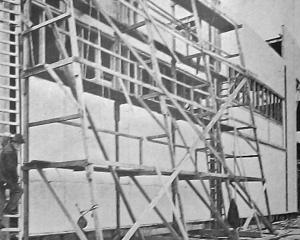

Gravel on the rails
The journey on the Rattray street cable car is never a comfortable one, but lately it has become more unpleasant than ever. From Maclaggan street to Arthur street loose metal has been placed on the road. A result is that vehicles passing up or down Rattray street remove a quantity of metal on to the rails of the up cable car, which bumps over them, to the great discomfort of the passengers.
Operator error
Ostracism of the road hog to-day, just as the slacker during war times was given the cold shoulder by his fellows, is advocated as one method of reducing automobile casualties, according to traffic authorities. Failure to give right of way is responsible for many accidents in the tabulations that have been compiled by motoring organisations, and it the unanimous opinion that the road hog is the chief hazard of the highways.
Milford nitrate not needed
To the editor: It is evident that the farming community does not use the whole of the nitrogenous manure now being produced in the country. How is it going to utilise the £150,000 worth of nitrates which the promoters of the Bowen Falls scheme intend to produce during their first year’s operations? One further point is worthy of consideration by those who are anxious to back up the syndicate. As calcium nitrate is hygroscopic and cannot be long kept in bags on account of absorption of moisture from the atmosphere, it will have to be stored in drums or similar receptacles. It will certainly not pay to add the cost of freight to the works of empty drums. Does the syndicate then propose to make these drums on the spot, and thus add another factory to the nitrate works? — I am, etc, Geo. M. Thomson, Dunedin, March 28 — ODT, 30.3.1925
Compiled by Peter Dowden











